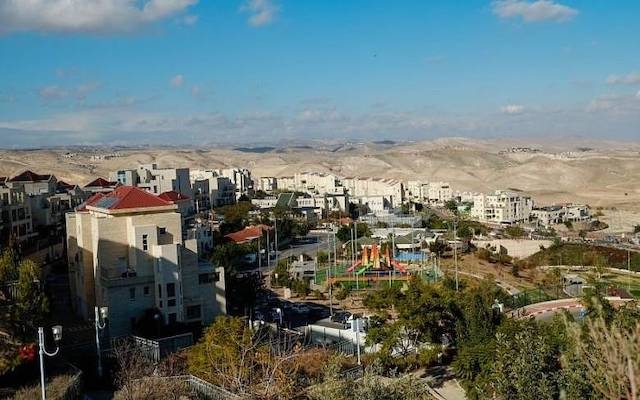For more than a year, a shroud of secrecy and meticulous partitioning concealed an ambitious initiative by the Samaria Regional Council. Under this veil, an experienced team consisting of engineers, architects, geographers, and professional consultants was diligently working. Their task: devising a comprehensive and pragmatic plan to achieve a population of one million Israeli residents in Samaria by 2050.
Yossi Dagan, the head of the council, personally spearheaded the writing process for over a year. The plan was meticulously developed by experts both within the Samaria Regional Council and from external sources, notably including the collaboration of the "Anaf" company.
The plan includes, among other things, increasing some of the settlements into cities, building new cities, laying railway lines to the center and the north of the country, widening the roads, establishing a medical center in the center of Samaria
— Martin Gore #SaveSheikhJarrah (@Lorien_MI) August 23, 2023
The foundational guidelines for achieving this population goal emerged from intensive discussions held approximately ten months ago. These dialogues took place during the annual central conference of settlement leaders, hosted by the council. Hundreds of settlement heads in Samaria participated, yet the identities of the plan's development team remained undisclosed. Inspired by the insights of local leaders, the program's team diligently formulated the complete structure of the plan.
This ambitious blueprint includes proposals to transform some settlements into full-scale cities, the construction of entirely new cities, the installation of train lines connecting to both the center and north of the country, road expansion, and the creation of a central medical facility in Samaria. Further aspects of the plan involve the establishment of an airport, industrial zones, and cultural institutes, among other initiatives.
Yossi Dagan Samaria Council head has submitted to Netanyahu a plan to increase the Jewish population in the Samaria segment of the West Bank from 170,000 to 1 million by 2050 and to build a new airport and railway networkhttps://t.co/CPv5HTd0mA pic.twitter.com/M8OfmVkfs4
— Philip (@rulesbasedworld) August 23, 2023
In anticipation of the coming years, the project's architects regard Samaria as vital to resolving the nation's central overcrowding problem, a mounting socio-political strategic challenge. They see in Samaria's millions of empty dunams a golden opportunity, being the only state-owned land reserves near the center, a mere 20 kilometers from Tel Aviv.
The plan's details meticulously consider the required infrastructure to support a million residents in Samaria. They are based on designs declared on state lands, encompassing the integration of existing settlements and sites, taking into account the region's topography, size, and proximity to the settlements. Moreover, the plans stress the importance of maintaining open spaces between and within settlements and emphasize the critical design of access roads.
In a letter to the prime minister, Yossi Dagan shared the intricate details of the plan, stressing the historical and national significance of the Samaria region. He writes, "The Samaria region, which lies at the heart of the Land of Israel, is of profound historical and national importance, the cradle of the Bible and Israeli culture." Dagan reassured that "the attached plan is constructed conservatively so that the settlements and industrial areas are planned on state-owned lands only."


